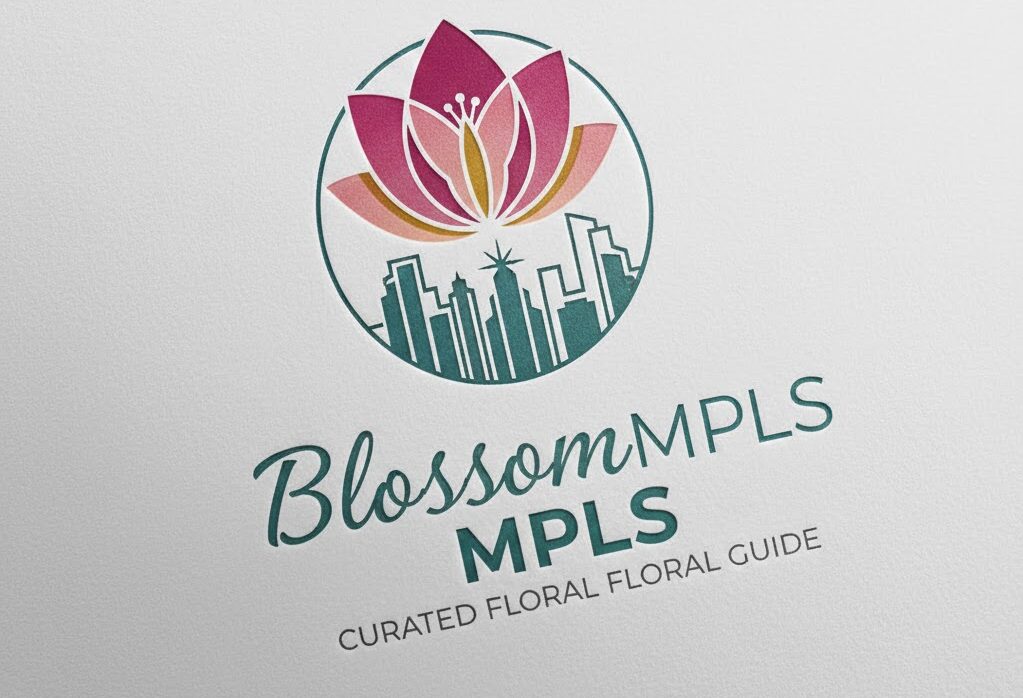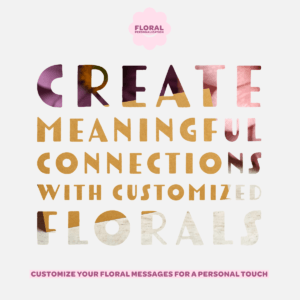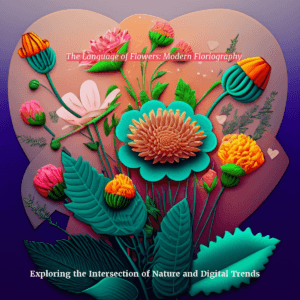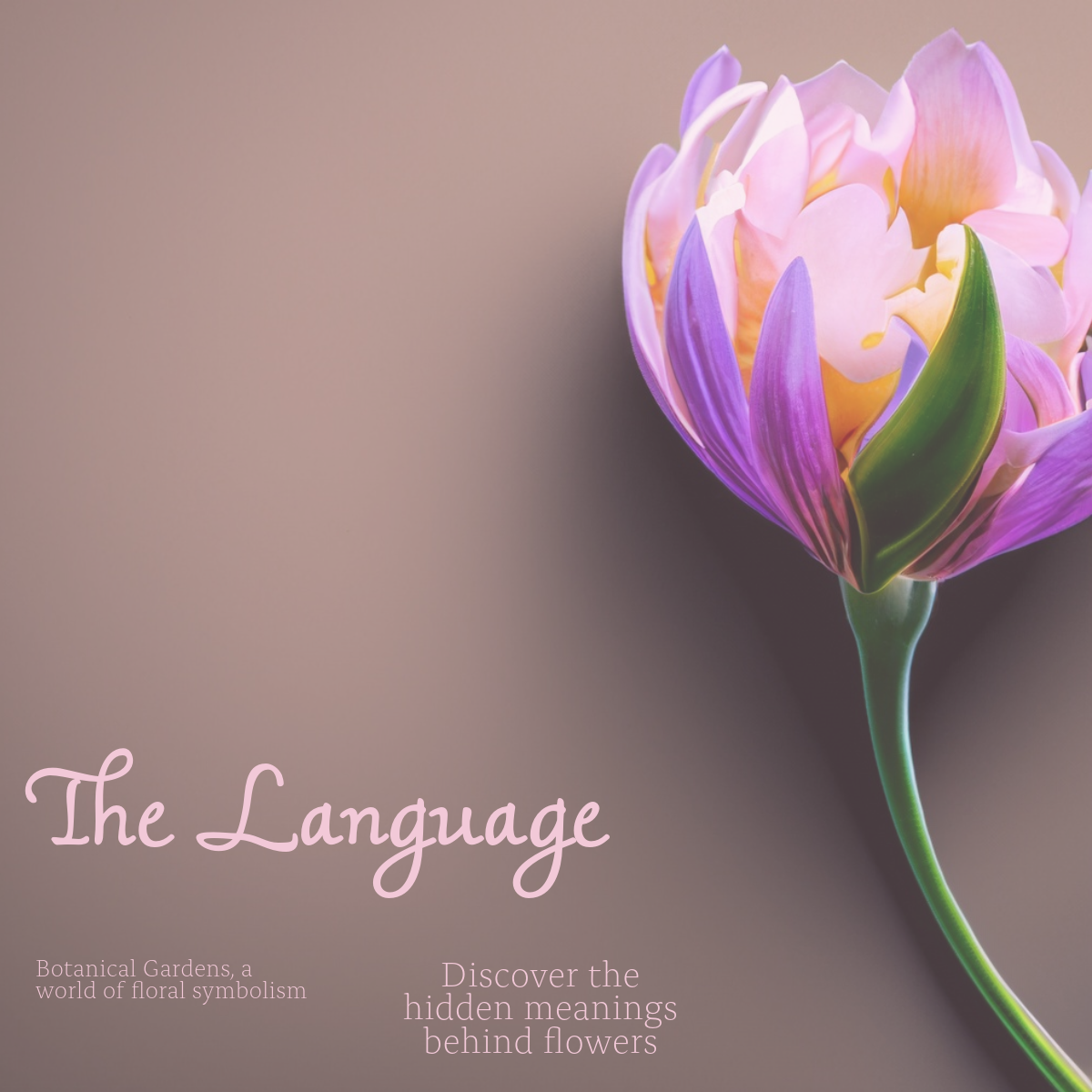
The Language Of Flowers: What They Mean
Introduction to the Language of Flowers
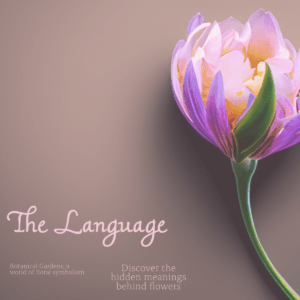
The Language of Flowers, known as floriography, is a captivating mode of communication that utilizes the beauty and symbolism of various blooms to convey emotions, sentiments, and messages. This form of expression became particularly popular during the Victorian era but has roots tracing back to ancient civilizations. Each flower carries its own significance, encouraging the sender and recipient to engage in a delicate dance of meaning without uttering a single word.
Historically, floriography flourished as it allowed individuals to communicate feelings that societal norms often stifled. In many cultures, flowers were used to express love, sympathy, celebration, or even disdain, giving rise to elaborate catalogs and guides to their meanings. For instance, a red rose often symbolizes passionate love, while a white lily conveys purity and innocence. This rich history highlights the personal and cultural narratives woven into the fabric of floral symbolism across time and space.
Globally, flowers play a substantial role in different cultures, often intertwined with their traditions, beliefs, and rituals. From the vibrant marigolds of Diwali in India to the somber chrysanthemums of All Souls’ Day in Mexico, flowers serve not only as decorative elements but also as powerful symbols that articulate life’s complexities. Their role in non-verbal communication transcends language barriers, allowing individuals to express emotions with a simple bouquet. In this way, flowers connect us, bridging gaps in understanding through their vivid colors and scents, becoming a universal language in the tapestry of human interaction.
Symbolic Meanings of Popular Flowers
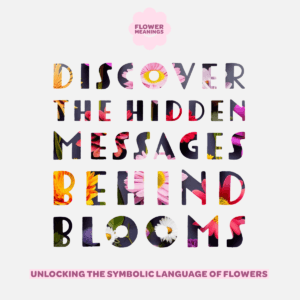
Roses have long been revered as symbols of love and passion, making them one of the most recognized flowers in various cultures. The deep red rose, in particular, embodies romantic devotion, while the varying hues of roses can convey an array of emotions. Pink roses suggest admiration and gratitude, yellow roses symbolize friendship, and white roses often represent purity and new beginnings. This rich palette of meanings is why roses hold a central place in occasions like Valentine’s Day, weddings, and anniversaries, where the language of love is expressed through blooming petals.
Lilies, known for their striking beauty and elegance, are often associated with purity and renewal. The white lily, especially, is a powerful symbol of innocence and virtue, frequently appearing in religious and spiritual contexts. In many cultures, lilies signify the arrival of spring, embodying the essence of rebirth and transformation. This makes them a popular choice for celebrations such as baptisms and weddings, where they serve as a reminder of fresh starts and the promise of new beginnings, highlighting the deeper connections between floral symbolism and life’s milestones.
On the other hand, sunflowers convey adoration and loyalty, turning their faces toward the sun and symbolizing the unwavering support and devotion of those who cherish them. Their bright, cheerful disposition makes them perfect for bringing joy and positivity into any space, encapsulating feelings of warmth and happiness. Similarly, daisies carry meanings of innocence and cheerfulness, often representing purity and childlike joy. These charming flowers remind us of the simple pleasures in life, embodying hope and positivity. Together, these popular flowers highlight the diverse range of emotions that blossoms can represent, enriching our lives with their beauty and symbolism.
Cultural Significance and Variations
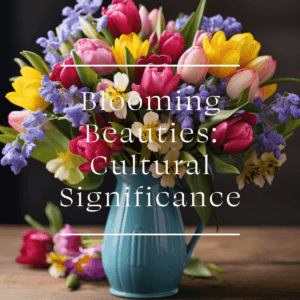
Flowers have held substantial cultural significance across the globe, with their meanings often diverging dramatically between Eastern and Western cultures. In many Eastern traditions, flowers are deeply embedded in spiritual practices and symbolism. For instance, the lotus flower is revered in Hinduism and Buddhism, symbolizing purity, enlightenment, and the cycle of rebirth as it rises beautifully from muddy waters. Conversely, in Western cultures, flowers like the rose have primarily been associated with romance and beauty, serving as gifts in matters of love and affection. The appreciation for flowers in the West is often tied to celebrations such as Valentine’s Day and Mother’s Day, highlighting the importance of flowers in expressing human emotion rather than their spiritual significance.
Folklore and mythology also play a significant role in the symbolic meanings of flowers across cultures. In various mythologies, flowers are often depicted with divine qualities or as offerings to gods and goddesses. In Greek mythology, the narcissus is linked to the story of Narcissus, symbolizing vanity and the danger of self-obsession. Similarly, in Irish folklore, the shamrock is often associated with St. Patrick and represents good luck and faith. These stories not only provide context for the flowers’ meanings but also enrich the cultural narratives surrounding their significance, weaving them into the very fabric of human experience.
However, cultural specificities and variations can lead to unique interpretations of the same flower in different regions. For instance, while white lilies might symbolize purity in many Western cultures, in some Asian cultures, they are associated with funerals and mourning. The color and context add layers of meaning, transforming the perception of the same flower. This complexity reflects the intricate ways in which flowers can serve as cultural symbols, portraying the values, beliefs, and historical experiences of varying societies around the world. By understanding these cultural differences, we can better appreciate the profound relationship between humans and the natural beauty of flowers.
Flowers in Literature and Art
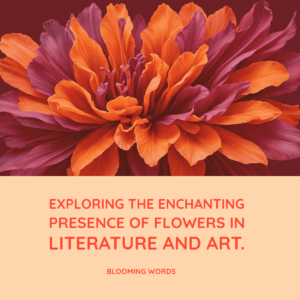
Flowers have long served as powerful symbols in literature, capturing human emotions and transcending the nature of mere aesthetics. In Shakespeare’s works, for example, flowers often convey complex feelings and thematic depth. The iconic phrase “A rose by any other name would smell as sweet” from *Romeo and Juliet* emphasizes the universal beauty of love, transcending social barriers. Similarly, in *Hamlet*, Ophelia’s gifting of flowers—each with specific meanings—provides insight into her state of mind and the tumultuous reality of the world she inhabits, creating a rich tapestry of meaning woven through floral imagery.
In the realm of visual art, flowers have inspired countless renowned masterpieces, reflecting both natural beauty and deeper symbolic interpretations. Vincent van Gogh’s *Sunflowers* series exemplifies how a simple subject can evoke vibrant emotion and individuality, as he transformed ordinary flowers into expressions of beauty and reflection of his personal struggles. Additionally, the works of Georgia O’Keeffe, with her sweeping depictions of flowers, elevate their status from commonplace to monumental, inviting viewers to contemplate their details and significance in both nature and life. These artworks illustrate how flowers can serve not just as subjects, but as profound vessels of artistic expression.
Moreover, the symbolic use of flowers in poetry and prose adds further layers of meaning to human experience. Poets like Robert Frost and Emily Dickinson employed floral imagery to explore themes of love, mortality, and the passage of time. Dickinson’s poems often feature flowers as metaphors for the fleeting nature of life and beauty, while Frost uses them to evoke the contrasting emotions found in the cycles of nature. Through these literary devices, flowers become more than mere decoration; they embody the very essence of human sentiment, transforming the way we perceive our relationship with the world and ourselves. The enduring presence of flowers in literature and art underscores their ability to articulate intricate emotions and ideas, bridging the gap between nature and human experience.
The Science Behind Floral Symbolism
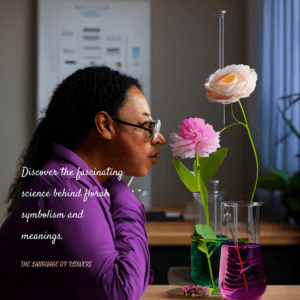
Flowers and Occasions: Choosing the Right Blooms
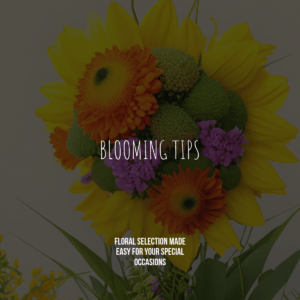
Flowers play a vital role in marking significant moments in life, and selecting the right blooms for various occasions can enhance their emotional impact. At weddings, flowers are often the centerpiece of romance and unity. Couples typically choose blooms that reflect their personalities and the theme of their celebration, with roses symbolizing passionate love, peonies representing good fortune and prosperity, and hydrangeas signifying heartfelt emotions. The choice of flowers extends beyond just aesthetics; they create a sensory experience that links the couple’s vows to the beauty of nature, making the day memorable for both the couple and their guests.
In contrast, flowers selected for funerals serve a different purpose. They are chosen to convey feelings of mourning and remembrance, honoring the deceased and providing comfort to the bereaved. Lilies, for instance, are often associated with purity and the restoration of the soul, making them a common choice. Chrysanthemums are seen as symbols of death in many cultures and are frequently used in funeral arrangements in various parts of the world. Each bloom communicates a message of love and respect, allowing mourners to express their grief and celebrate the life of the departed.
Celebratory occasions such as birthdays warrant the selection of joyful and vibrant flowers. Bright, cheerful blooms like sunflowers, tulips, and gerbera daisies can evoke happiness and mark the special nature of the day. Similarly, during festive seasons and holidays, floral choices often reflect the themes of the celebration. In spring, for example, pastel blooms like daffodils and hyacinths herald the season of renewal, while vibrant poinsettias are a popular choice for Christmas. In essence, by choosing the right flowers for various occasions, we engage in a rich tradition that speaks to our deepest emotions, enhancing the meanings of these significant life events.
Customizing Floral Messages for Personal Touch
Crafting personalized floral arrangements takes into account not just the blooms but the emotions and messages they convey. By thoughtfully selecting flowers that resonate with the recipient’s personality or the occasion, one can create a truly unique arrangement. For instance, a bouquet for a friend going through a challenging time might incorporate soothing blooms like lavender or blue delphiniums, providing a sense of peace and support. Additionally, incorporating a beloved flower of the recipient creates a personal touch, reminding them of cherished memories or sentiments, thereby fostering a deeper emotional connection.
Color combinations play a crucial role in conveying specific messages through floral arrangements. Each color carries different meanings and emotions; for instance, red symbolizes love and passion, while yellow promotes joy and friendship. A well-designed bouquet that combines these colors can eloquently express sentiments, such as a mix of red roses and sunny daisies to celebrate a milestone in a relationship, combining love with happiness. Understanding color theory in floral design allows the creator to curate arrangements that resonate with the intended emotion, communicating messages without words.
Furthermore, incorporating meaningful herbs and foliage can elevate a floral arrangement, adding layers of symbolism and personal significance. For example, rosemary is often associated with remembrance, making it a touching addition to a bouquet meant to honor someone special. Fresh herbs like mint can introduce a fresh scent that evokes pleasant memories, while lush greens like ferns provide texture and depth, enhancing the overall aesthetic. By combining flowers, colors, and greenery with thoughtful intent, one can create customized floral messages that leave a lasting impression, transforming ordinary arrangements into heartfelt expressions of love, remembrance, or celebration.
Modern-Day Floriography: Digital and Social Media Trends
Flowers play a vital role in marking significant moments in life, and selecting the right blooms for various occasions can enhance their emotional impact. At weddings, flowers are often the centerpiece of romance and unity. Couples frequently choose blooms that resonate with their personalities and align with the theme of their celebration. For instance, roses symbolize passionate love and desire, while peonies represent good fortune and prosperity, making them a popular choice for many brides. Hydrangeas, with their lush appearance, signify heartfelt emotions. The choice of flowers extends beyond aesthetics; they create a sensory experience that links the couple’s vows to the beauty of nature, enriching the celebration and creating lasting memories for both the couple and their guests.
In contrast, the selection of flowers for funerals serves a more somber purpose, focused on conveying feelings of mourning and remembrance. These arrangements honor the deceased and provide solace to the grieving. Lilies, often associated with purity and the restoration of the soul, are commonly used in funeral bouquets, symbolizing the transient nature of life. Additionally, chrysanthemums carry deep significance in many cultures, often seen as symbols of death and respect. This intentional choice of blooms allows mourners to express their grief while also celebrating the life and legacy of the departed, creating a space for reflection and connection.
Celebratory occasions like birthdays call for joyful and vibrant flowers that evoke happiness and reflect the special nature of the day. Bright, cheerful blooms such as sunflowers, tulips, and gerbera daisies can transform an ordinary birthday into a festive celebration. During festive seasons and holidays, floral selections often mirror the themes of the occasion; for example, pastel blooms like daffodils and hyacinths in spring symbolize renewal, while bold poinsettias are a quintessential choice for Christmas. Ultimately, choosing the right flowers for various occasions allows us to engage in a rich tradition, connecting our emotions to these significant life events and enhancing their meanings through nature’s exquisite beauty.
The Future of the Language of Flowers
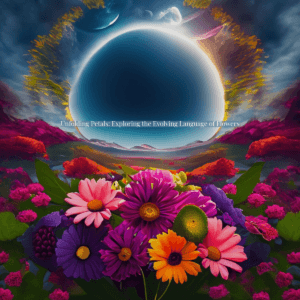
The language of flowers has historically been a nuanced tapestry of symbolism, with various blooms conveying different emotions and messages. As society evolves, so too does the understanding of flower symbolism. Emerging trends reflect contemporary values, with more people gravitating towards unique and personal flower choices that express individuality rather than traditional meanings. For instance, more individuals are breaking away from classic symbols such as roses for love, opting instead for wild or exotic flowers. This shift indicates a growing desire for personalized expressions in floral arrangements, where the significance of flowers is tied more closely to personal experiences rather than established conventions.
Sustainability has also become a critical focus in the floral industry. As customers increasingly prioritize eco-friendly practices, florists are adapting to meet these new demands. This includes sourcing flowers from local growers, using organic farming methods, and opting for biodegradable materials in arrangements. The rise of sustainable floristry influences not only the choices of blooms but also how they are presented, with a notable trend towards minimalism and natural aesthetics that emphasize the beauty of the flowers themselves. By integrating sustainable practices, the floral industry is not only appealing to environmentally conscious consumers but also redefining the messages conveyed through flowers—highlighting a commitment to preserving nature alongside celebrating life’s moments.
Looking ahead, predictions for future floral preferences suggest a continued emphasis on meaningful and sustainable choices. As people seek deeper connections to the environment and a reflection of their values, it’s likely that we will see a rise in native and seasonal flowers being favored for their lower carbon footprints and compatibility with local ecosystems. Additionally, the use of technology in floral design—such as augmented reality applications that can help individuals visualize arrangements—might enhance the personalized experience of choosing flowers, leading to a resurgence in the language of flowers as a form of communication. Overall, the future of flower symbolism seems poised to balance traditional meanings with modern values, fostering a rich dialogue that resonates with both personal and ecological significance.
